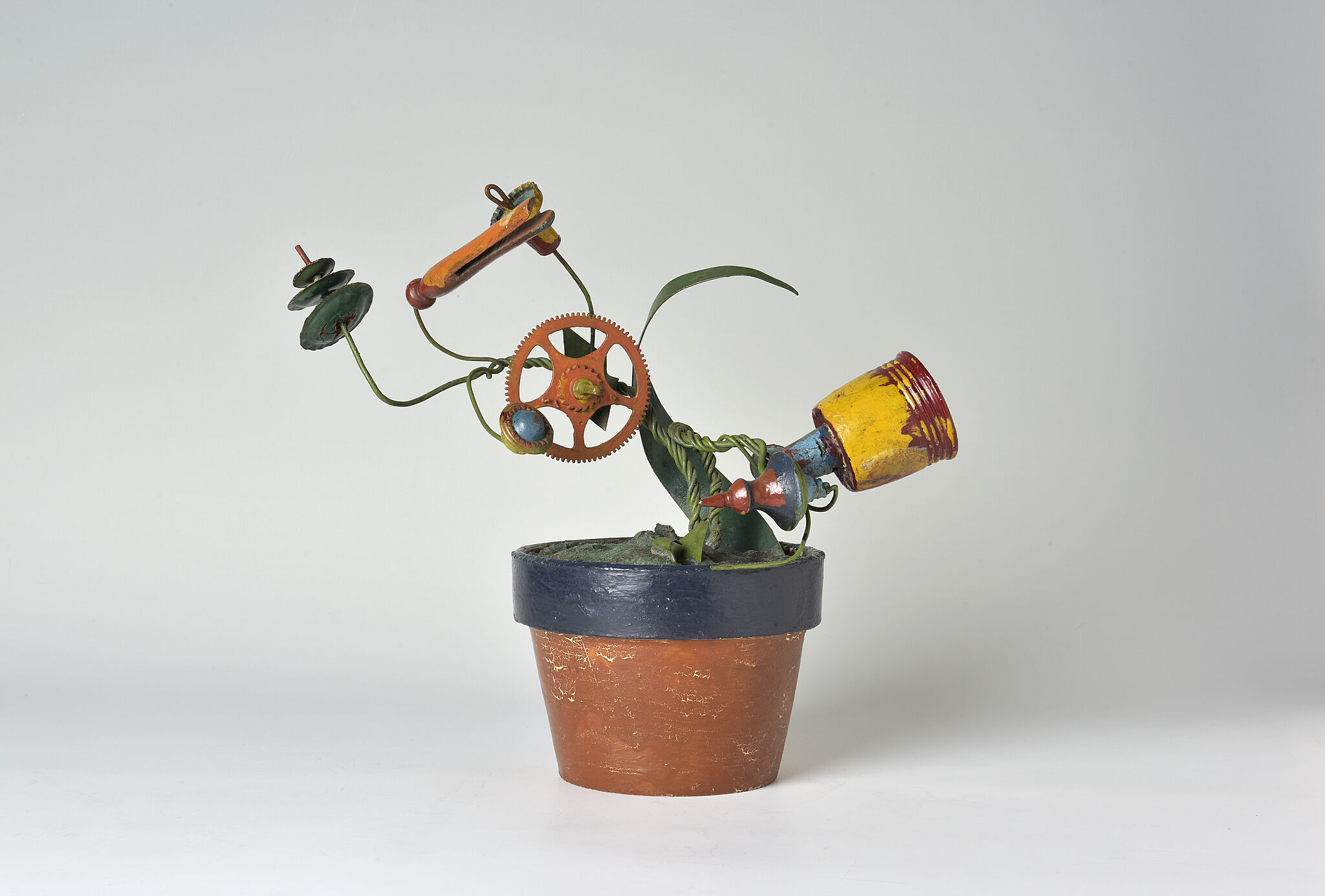Grant Wood: American Gothic and Other Fables | Art & Artists
Mar 2–June 10, 2018
Grant Wood: American Gothic and Other Fables | Art & Artists
Decorative Arts
1
Grant Wood began his career as a decorative artist. Even after he shifted to fine arts, he retained the ideology and pictorial vocabulary of Arts and Crafts, a movement that promoted simplicity of design and truth to materials. To it, he owed his later use of flat, decorative patterns and sinuous, intertwined organic forms as well as his belief that art was a democratic enterprise that must be accessible to the average person, not just the elite.
Wood’s training began early. For two summers after graduating from high school he studied at the Handicraft Guild in Minneapolis before joining the Kalo Arts and Crafts Community, a workshop and training facility for artisans in Park Ridge, Illinois, a suburb of Chicago. In 1914, he opened the Volund Crafts Shop with a fellow craftsman and began to receive recognition for his jewelry and metalwork in the Art Institute of Chicago’s prestigious annual decorative arts exhibitions. Nevertheless, commercial success eluded him and he closed the shop and returned to Cedar Rapids in 1916 to begin his painting career. The decision did not, however, bring an end to his work in decorative arts, which he continued well into the 1930s.
Lilies of the Alley, 1925
Between 1925 and 1935, Wood lived rent-free in the hayloft of the Cedar Rapids carriage house behind the mortuary owned by his friend and patron David Turner. He transformed the space into a studio and living quarters for himself and his mother, dubbing it 5 Turner Alley. In a punning reference to the lily of the valley plant, Wood titled this sculpture and the three others like it in the exhibition after his street. He created these flowerlike forms from an assortment of found materials, including bottle caps, shoehorns, gears, and clothespins, and placed them in earthenware flowerpots, which he gave to friends. Precursors of mid-twentieth century assemblages, Wood’s lilies reveal his inventiveness and whimsical humor.

